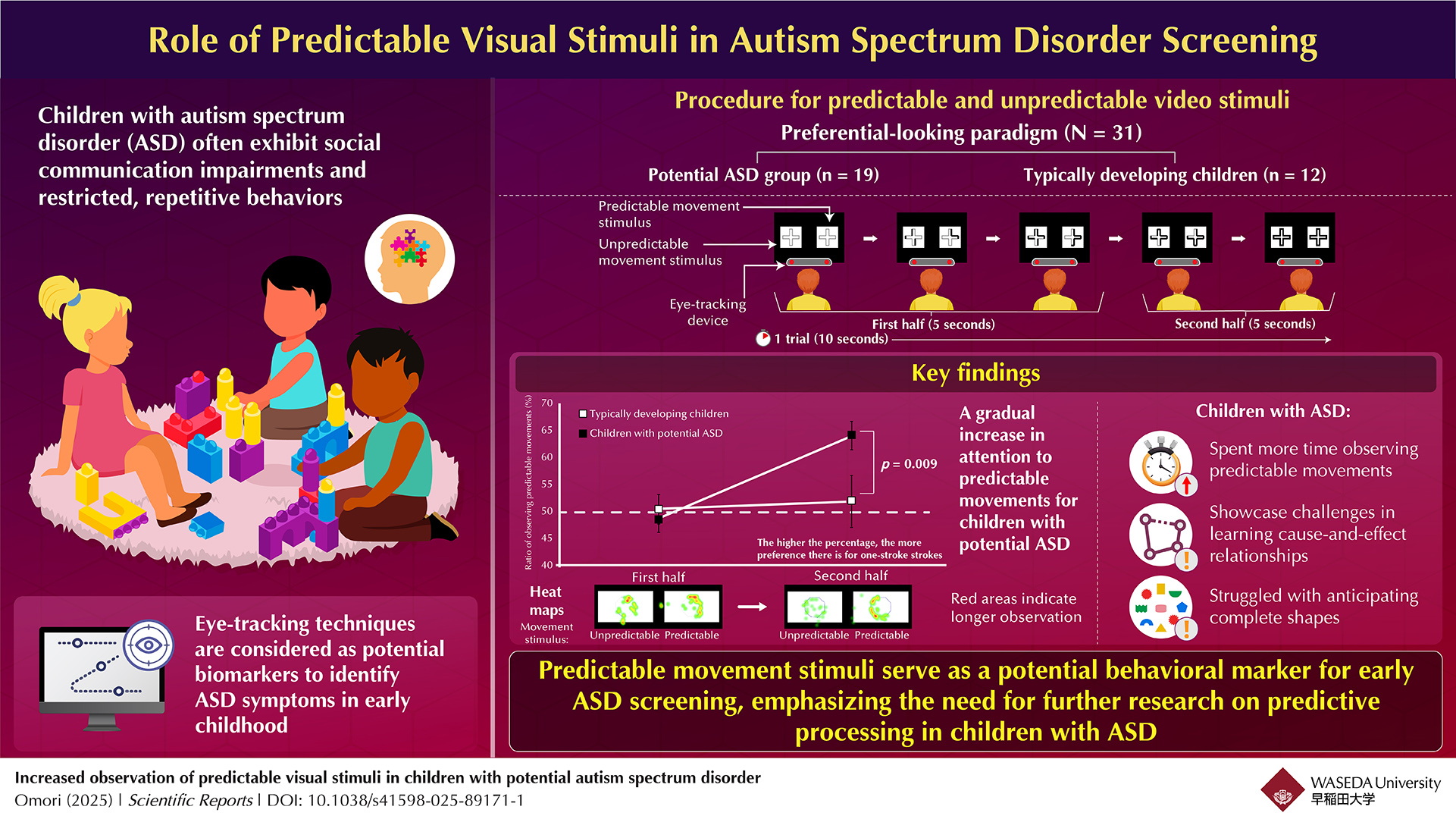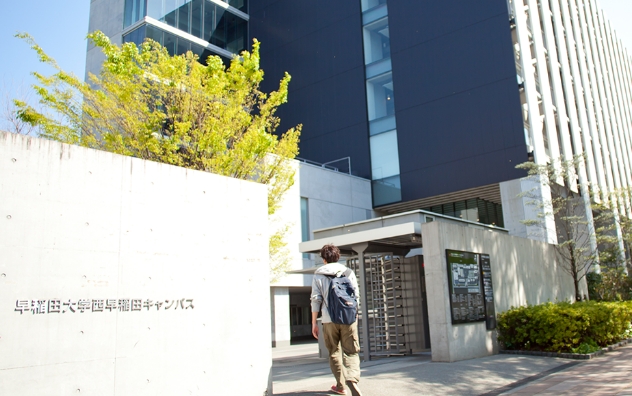Predictable Visual Stimuli as an Early Indicator for Autism Spectrum Disorder in Children
Tue, Apr 8, 2025-
Tags
Predictable Visual Stimuli as an Early Indicator for Autism Spectrum Disorder in Children
Research highlights the potential utility of predictable movement stimuli as a behavioral marker for early autism spectrum disorder screening
Children with autism spectrum disorder (ASD) often display social communication impairments and restricted and repetitive behaviors. While previous studies have shown that children with ASD tend to prefer observing repetitive movements over random ones, the developmental timeline of this preference has remained unclear. To address this, a recent study utilized eye-tracking methods demonstrating that children with potential ASD spent significantly more time observing predictable movements, highlighting its potential as an early marker for ASD detection.

The study reveals that children with potential autism spectrum disorder (ASD) show a significant preference for predictable visual stimuli, spending more time observing them than typically developing children. Findings highlight the potential of using predictable movement patterns as an early behavioral marker for ASD, improving early detection and intervention strategies.
Children with autism spectrum disorder (ASD) often experience social communication impairments and engage in restricted and repetitive behaviors (RRBs). Early identification of these symptoms is critical for timely intervention, but detecting RRBs, in particular, remains a challenge. Previous studies using eye-tracking methods have revealed that children with ASD tend to favor non-social stimuli over social ones, a preference that aligns with ASD symptoms. However, the developmental timeline of this preference—especially regarding repetitive versus random movements—remains poorly understood. Research has shown that children with ASD may spend more time observing repetitive movements, a key characteristic of RRBs, but the underlying reasons for this preference and how it evolves over time remain unclear. This gap in understanding presents a significant challenge for accurately diagnosing and addressing the sensory and behavioral traits associated with ASD in young children.
To address this gap, a recent study conducted by Associate Professor Mikimasa Omori from the Faculty of Human Sciences, Waseda University, utilized eye-tracking methods to examine the developmental timeline of children’s preferences for repetitive versus random movements. The study employed a preferential-looking paradigm to examine whether children with potential ASD demonstrated longer observation durations for predictable movements compared to typically developing (TD) children. Participants were presented with pairs of geometric stimuli featuring predictable (one-stroke sketch) and unpredictable (multi-stroke sketch) movements, which were freely observed side-by-side. An article describing this research was published in Scientific Reports on February 7, 2025.
“This study revealed that children with potential ASD spent significantly more time observing predictable movements,” says Omori. Unlike the TD children, who did not show a shift in their observation patterns, children with potential ASD demonstrated a gradual increase in their focus on the predictable movements as the stimulus presentation progressed. This suggests that children with potential ASD may develop a preference for predictable movements over time, which aligns with the repetitive behavior characteristic of the disorder. The results further indicate that the preference for predictable movements in children with potential ASD may be linked to difficulties in learning cause-and-effect relationships between movement trajectories and the anticipation of complete shapes.
Currently, early detection of ASD typically focuses on social communication deficits, such as eye contact and language delays. However, identifying a preference for predictable movements could serve as an early indicator of ASD in children as young as three years old. “This approach could be particularly valuable for children who remain underdiagnosed until later childhood, providing a more efficient method for early detection,” explains Omori. Additionally, the study’s procedure, which does not require verbal responses, could be adapted for children under 18 months. Given that most children in Japan undergo developmental checkups at 18 and 36 months, introducing a brief, two-minute video observation task during these checkups could help identify children at risk for ASD and support early intervention.
Overall, the study contributes to our understanding of how sensory and behavioral traits associated with ASD manifest in young children. The study’s use of eye-tracking methods provides valuable insight into how children with ASD perceive and engage with repetitive versus random stimuli, a key aspect of their RRBs. “This study highlights the potential utility of predictable movement stimuli as a behavioral marker for early ASD screening and underscores the essential need for further research into predictive processing in children with ASD,” concludes Omori.
Reference
Title of original paper: Increased observation of predictable visual stimuli in children with potential autism spectrum disorder
DOI: 10.1038/s41598-025-89171-1
Journal: Scientific Reports
Article Publication Date: 07 February 2025
Author: Mikimasa Omori
Affiliation: Faculty of Human Sciences, Waseda University, Japan














